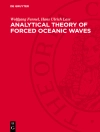The work addresses the following questions in the context of interglacial climate dynamics: (i) What are the amplitudes of natural climate variations on timescales of several years to millennia? (ii) Do abrupt changes in the large-scale circulation of the Atlantic Ocean occur in interglacials? (iii) Which biogeochemical feedback mechanisms control the natural limits of atmospheric concentrations of greenhouse gases and aerosols? (iv) Which linkages exist between climate and pre-industrial cultures?
The work is based on an integrated approach in paleoclimate research, in which all available paleoclimate archives (terrestrial and marine as well as ice cores) are combined in order to yield a comprehensive and quantitative analysis of global environmental variations. Moreover, through a close linkage be-tween paleoclimate reconstructions and results from Earth-system models detailed insights into the dynamics of climate variations are gained.
Spis treści
DFG Priority Research Program „Integrated analysis of interglacial climate dynamics” (INTERDYNAMIC).- Comparison of Climate and Carbon Cycle Dynamics during Late Quaternary Interglacials.- Global Synthesis of Sea-Surface Temperature Trends During Marine Isotope Stage 11.- Climate Sensitivity During and Between Interglacials.- What Ends an Interglacial? Feedbacks Between Tropical Rainfall, Atlantic Climate and Ice Sheets During the Last Interglacial.- Evaluation of Eemian and Holocene Climate Trends: Combining Marine Archives with Climate Modelling.- Holocene Environmental Variability in the Arctic Gateway.- Detecting Holocene Changes in the Atlantic Meridional Overturning Circulation: Integration of Proxy Data and Climate Simulations.- Phase-shift Between Surface Ocean Warming, Evaporation and Changes of Continental Ice Volume During Termination I Observed at Tropical Ocean Sediment Cores.- Loop Current Variability – its Relation to Meridional Overturning Circulation and the Impact of Mississippi Discharge.- Hydroclimatic Variability in the Panama Bight Region During Termination 1 and the Holocene.- Control of Seasonality and Interannual to Centennial Climate Variability in the Caribbean During the Holocene – Combining Coral Records, Stalagmite Records and Climate Models.- The Southern Westerlies During the Holocene: Paleoenvironmental Reconstructions from Chilean Lake, Fjord, and Ocean Margin Sediments Combined with Climate Modeling.- Mineral Dust Variability in Antarctic Ice for Different Climate Conditions.- Model-data Synthesis of Monsoon Amplitudes for the Holocene and Eemian.- Vegetation, Climate, Man – Holocene Variability in Monsoonal Central Asia.- Global Land Use and Technological Evolution Simulations to Quantify Interactions Between Climate and Pre-industrial Cultures.- North-west African Hydrologic Changes in the Holocene: a Combined Isotopic Data and Model Approach.- Holocene Climate Dynamics, Biogeochemical Cycles and Ecosystem Variability in the Eastern Mediterranean Sea.- Environmental and Climate Dynamics During the last two Glacial Terminations and Interglacials in the Black Sea/Northern Anatolian Region.- Seasonal Reconstruction of Summer Precipitation Variability and Dating of Flood Events for the Millennium Between 3250 to 2250 Years BC for the Main Region, Southern Germany.- Precipitation in the Past Millennium in Europe – Extension to Roman Times












